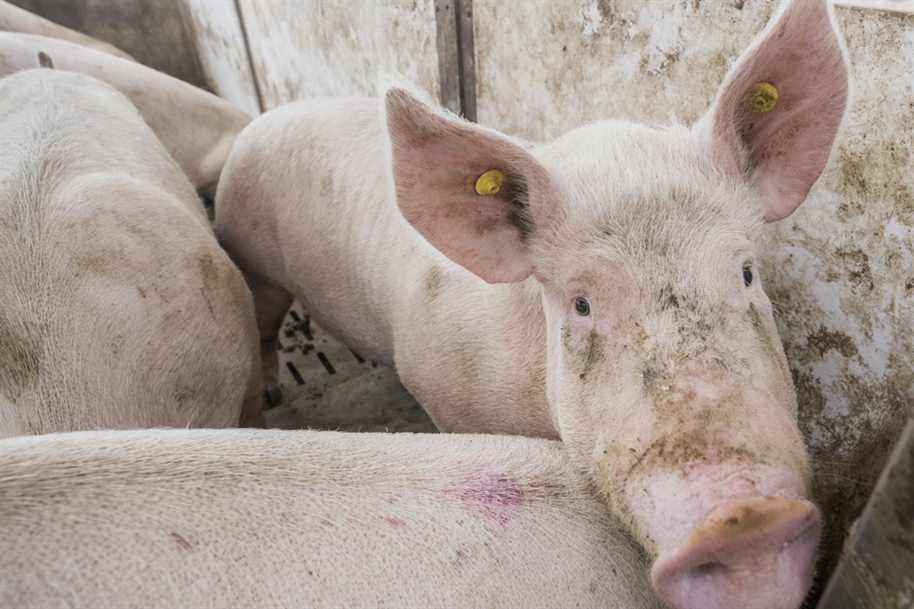Piggery projects in regions that are nevertheless agricultural are arousing outcry. Why build new ones when Quebec already produces far more hogs than it consumes and the sector requires significant government support to face market conditions?
Posted at 5:00 a.m.
Three government programs cover livestock risk management. The most substantial, the Farm Income Stabilization Insurance Program (ASRA), funded two-thirds by Quebec and one-third by breeders, pays compensation to the latter when the sale price obtained is insufficient.
In 10 years, from 2011 to 2020, insured breeders received $958 million in compensation. If we go back a year, from 2010 to 2019, it climbs to 985 million. Worse, there are only two years for which the breeders did not need compensation.
“It is certain that if you take the last 10 years, the amount can be large,” agrees Louis-Philippe Roy, second vice-president for Les Éleveurs de porcs du Québec. The last marketing convention offering a better price to producers, the next decade should not look like the previous one, he pleads. For the year 2021, “at the latest figures, there would be no compensation, or it would be minimal”.

The federal-provincial AgriInvest and AgriStability programs also paid out $145 million to participating producers between 2010 and 2019. Adding this amount to the ASRA compensation, the score climbs to $1.13 billion.
This does not include other government support, including the Agricultural Property Tax Credit Program and the Agricultural Investment Fund, which are not specific to hog farms.
Pork import-export
These public funds are used to support production mainly destined for foreign countries, since approximately 61% of Quebec pork is exported. This share has “increased significantly” over the years, since it was 52% in 2007, reported a report by Groupe AGÉCO to the Quebec Ministry of Agriculture in 2020.

“This strong dependence on exports leads to a great vulnerability of the sector in the face of disruptions on international markets, whether these result from a trade conflict such as the one with China or the outbreak of an emerging disease”, noted AGECO.
Only a quarter of the pork produced in Quebec is consumed here (23% in meat and 2% for industrial uses such as food gelatin or cosmetics), the rest going to the rest of Canada (14%), indicate Les Éleveurs de porcs.
However, just over half (about 55%) of the pork consumed in Quebec in 2020 came from Quebec farms, according to estimates from the Ministry of Agriculture, Fisheries and Food of Quebec (MAPAQ ) prepared for The Press.
Thus, for every dollar spent on pork consumption in Quebec in 2020, only $0.61 was used to pay salaries and benefits to employees and businesses in the province (farms, processing companies, retailers and restaurants ), show data from MAPAQ.
Why not raise only the pigs needed to supply the Quebec market?
It is important “to have markets abroad to be able to send different cuts that are not consumed in Quebec because otherwise, we would have food loss”, pleads Mr. Roy, citing the heads, ears , legs and offal. It’s broader than that, since pork is Quebec’s most important biofood export product. Seven million pigs slaughtered per year, “it seems like a lot of pigs”, but on a global scale, Quebec is “a small player”, argues the elected representative of the Breeders.
These 7 million heads represent an average: since 2013, annual slaughters have always been lower, show the data from Breeders.
Labor disputes and the pandemic have highlighted the limits of slaughter capacity. After the holidays, the number of hogs waiting peaked at some 200,000 animals. The backlog is starting to clear up, but the stakes remain.
“It’s certain that with the lack of manpower, we can’t think of growth either,” says Mr. Roy.
So why build new piggeries?
“We are more stagnating than growing, but we need to renew our buildings. »
New constructions are “not necessarily to increase the herd”, but often “to replace other farms which are less adequate” from the point of view of animal welfare for sows, or fattening. “So it’s often more renewal than new construction. »
The second vice-president of the Breeders does not want to comment on the trend for the next 5 to 10 years, but mentions the 1.5 million Ontario pigs slaughtered in Quebec last year, which Quebec breeders would like to substitute their animals. “There is a possibility of an increase there, but I would tell you that in the short and medium term, the investments to upgrade in animal welfare are major,” notes Mr. Roy. “There are projects being done, there are people who see development, but for the moment, we are more about maintaining our production than ensuring growth. »
7 million
Number of Quebec pigs slaughtered annually, on average: since 2013, slaughters have always been less than 7 million animals per year.
75%
Percentage of pork produced in Quebec that is sold abroad (61%) and in the rest of Canada (14%).
Source: Quebec Pork Breeders, 2020
21%
Weight of pork in biofood exports from Quebec, making it the leading biofood export in importance.
Source: MAPAQ, 2020
2
Number of years, in 10 years, for which pig farmers did not need compensation from the agricultural income stabilization insurance program (ASRA) (2014 and 2017).
Source: La Financière agricole du Québec


